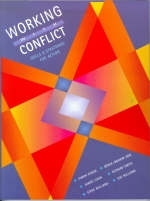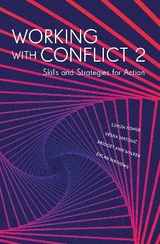
Working with Conflict
Zed Books Ltd (Verlag)
978-1-85649-837-1 (ISBN)
- Titel erscheint in neuer Auflage
- Artikel merken
This source book is for people working in areas affected by conflict and violence. Easy to use, well laid out, and including helpful visual materials, it provides a range of practical tools - processes, ideas, techniques -- for tackling conflict. These tools have been developed over a number of years by the organization, Responding to Conflict (RTC), in collaboration with practitioners from around the world. It is divided into 4 Parts:
· Understanding: A guide to understanding conflict, including practical techniques for conflict analysis and the critical issues that must be taken into account - power, culture, identity, gender and rights.
· Strategies: How to build effective strategies to address conflict, including how to influence policy within organizations.
· Action: Intervening in situations of acute conflict; addressing the consequences; and working on the social fabric which conditions the emergence of conflict.
· Evaluation: The skills involved in the necessary processes of evaluation and learning in order to improve future interventions.
The book embodies and reflects the rich diversity of over 300 practitioners from some 70 countries who, in RTC Working with Conflict courses, have pooled their variegated experience and adapted these methods to suit a wide range of situations. Examples and cases are drawn from around the world - including Cambodia, Afghanistan, South Africa, Kenya, Northern Ireland and Colombia. The book highlights the options available to individuals and organizations; equips them with a basis on which they can plan what responses are possible; and strengthens their capacity to engage in useful interventions. The final chapter provides a list of key conflict-related and peace-building resources, including organizations, publications and websites.
For all practitioners who are working in conflict-prone and unstable parts of the world in the fields of development, relief work, human rights, community relations, peace and reconciliation, this book should prove an invaluable support.
Simon Fisher is the director of Responding to Conflict based in Birmingham, England.
Acknowledgements
Preface
Part I: Analysis
1. Understanding Conflict - Towards a Conceptual Framework
Making sense of conflict
Conflict and Violence are different things
Causes of conflict
Addressing conflicts
Conflicts: To manage, resolve or transform?
Theories about different approaches to intervention in conflict
Violence is more than behaviour
Attitudes and Values in relation to violence
Violence and Nonviolence as ways of bringing about change
Peace as a process
How is it best to start?
2. Tools for Conflict Analysis
What is conflict analysis?
Stages
Timeline
Mapping
Stages
Timeline
Mapping
ABC Triangle
The Onion: Needs, Interests and Positions
The Conflict Tree
Force-Field Analysis
Pillars
Pyramid: Three-level Triangle
3. Critical Issues
Power
Culture
Identity
Gender
Rights
Part II: Strategy
4. Building Strategies to Address Conflict
Visions: Building and Sharing
Multi-level Triangles
Mapping for Entry Points
The Grid: Ideas for Work on Conflict
The Wheel: Integration of Work to Build Sustainable Peace
Aid and Conflict
Impact Mapping: Tracing the Impact of Aid and Development Programmes on
Conflict
The Strategy Circle
5. Influencing Policy: Bringing Your Own Organization with You
The Values Tree
Spectrum of Strategic Options
Checklist for Programming
Assessing Organizational Capacity
The Radar Chart
Helping Individuals to Change
Part III: Action
6. Intervening Directly in Conflict
Nonviolence as an Approach to Conflict Intervention
Preparing for Intervention
Awareness-raising and Mobilization for Change
Prevention
Maintaining a Presence
Enabling a Settlement
7. Addressing the Consequences
Post-war Reconstruction: Combining Physical and Social Aspects
Psychological Reconstruction: Helping Individuals to Deal with the Past
Social Reconstruction: Building Relationships
8. Working on the Social Fabric
Education for Peace and Justice
Participation of People in Decision-making
Good Governance
Part IV: Learning
9. Evaluation
Evaluating Working with Conflict
The Evaluation Wheel
Impact Assessment
Indicators
Key Issues in Evaluation
10. And Find Out More?
Organizations
Resources
Appendices
Glossary
Index
| Erscheint lt. Verlag | 1.8.2000 |
|---|---|
| Sprache | englisch |
| Maße | 210 x 280 mm |
| Themenwelt | Sozialwissenschaften ► Politik / Verwaltung ► Europäische / Internationale Politik |
| Sozialwissenschaften ► Soziologie ► Spezielle Soziologien | |
| ISBN-10 | 1-85649-837-9 / 1856498379 |
| ISBN-13 | 978-1-85649-837-1 / 9781856498371 |
| Zustand | Neuware |
| Haben Sie eine Frage zum Produkt? |
aus dem Bereich



